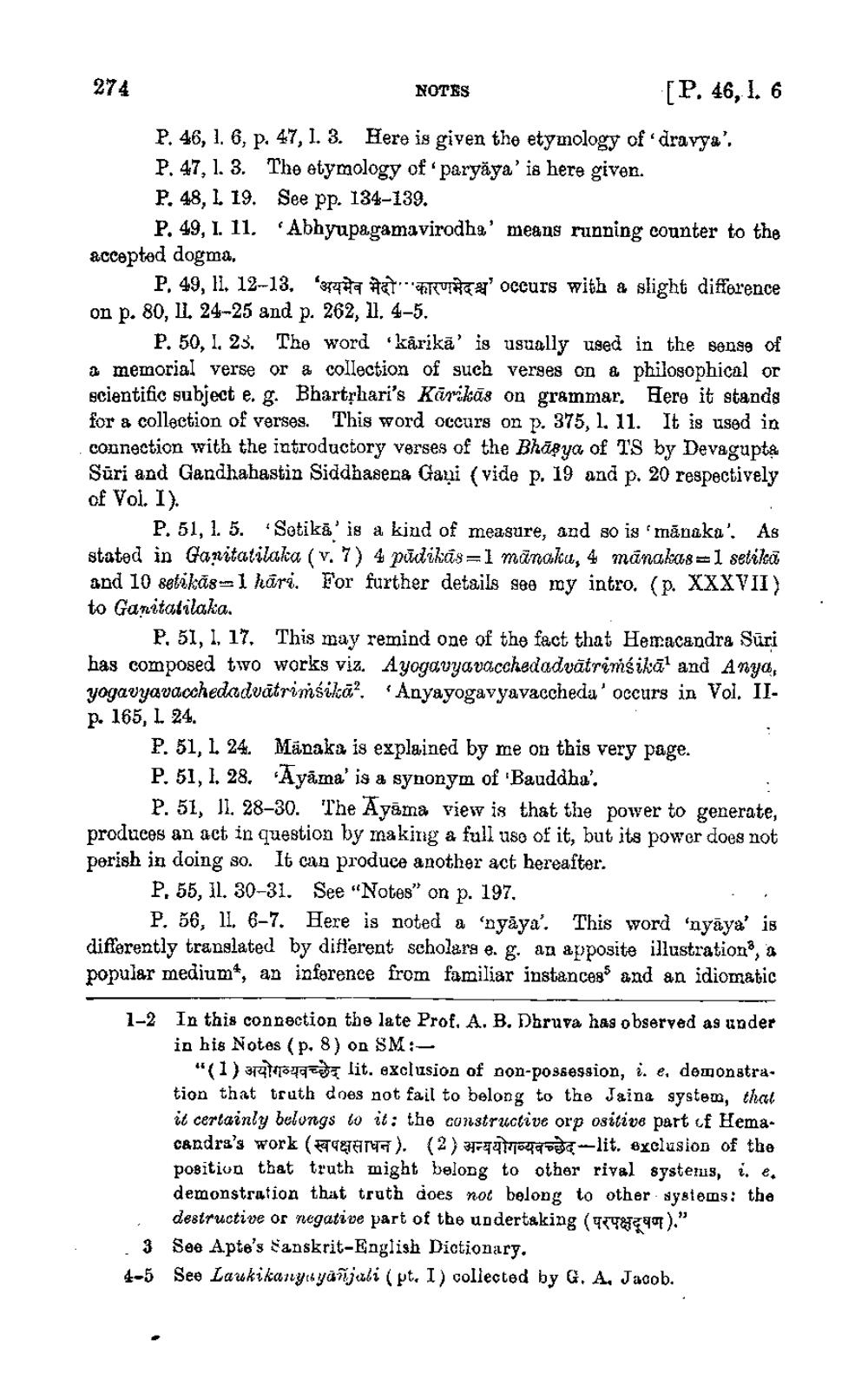________________
274
[P. 46, I. 6
P. 46, 1. 6, p. 47, 1. 3. Here is given the etymology of 'dravya'. P. 47, 1. 3. The etymology of 'paryaya' is here given. See pp. 134-139.
P. 48, L. 19.
6
Abhyupagamavirodha' means running counter to the
P. 49, I. 11.
accepted dogma,
NOTES
P.49, 11, 12-13. 'अयमेव भेदो कारणभेदश्च' occurs with a slight difference on p. 80, IL. 24-25 and p. 262, 11, 4-5.
P. 50, I. 23. The word karika' is usually used in the sense of a memorial verse or a collection of such verses on a philosophical or scientific subject e. g. Bhartṛhari's Kārikās on grammar. Here it stands for a collection of verses. This word occurs on p. 375, 1. 11. connection with the introductory verses of the Bhasya of TS Suri and Gandhahastin Siddhasena Gani (vide p. 19 and p. of Vol. 1).
It is used in by Devagupta 20 respectively
As
P. 51, 1. 5. Sotika is a kind of measure, and so is 'manaka'. stated in Ganitatilaka (v. 7) 4 pādikās=1 mānaku, 4 mánakas-1 setikā and 10 setikās- 1 hari. For further details see my intro. (p. XXXVII) to Ganitatilaka.
P. 51, 1, 17. This may remind one of the fact that Hemacandra Suri has composed two works viz. Ayogavyavacchedadvātrimśikā1 and Anya, yogavyavacchedadvātriṁśikā2. Anyayogavyavaccheda' occurs in Vol. II
p. 165, L. 24.
P. 51, 1. 24. P. 51, 1. 28.
P. 51, 11. 28-30. The Ayama view is that the power to generate, produces an act in question by making a full use of it, but its power does not perish in doing so. It can produce another act hereafter.
P, 55, 11. 30-31. See "Notes" on p. 197.
Mänaka is explained by me on this very page. Ayama' is a synonym of 'Bauddha'.
P. 56, 11. 6-7. Here is noted a 'nyaya'. This word 'nyaya' is differently translated by different scholars e. g. an apposite illustration3, a popular medium*, an inference from familiar instances and an idiomatic
1-2 In this connection the late Prof. A. B. Dhruva has observed as under in his Notes (p. 8) on SM:
"(1) lit. exclusion of non-possession, i. e, demonstration that truth does not fail to belong to the Jaina system, that it certainly belongs to it: the constructive orp ositive part of Hemacandra's work (g). (2) lit. exclusion of the position that truth might belong to other rival systems, i. e. demonstration that truth does not belong to other systems: the destructive or negative part of the undertaking (E¶).”
3 See Apte's Sanskrit-English Dictionary.
4-5 See Laukikanyayañjali (pt. I) collected by G. A. Jacob.




